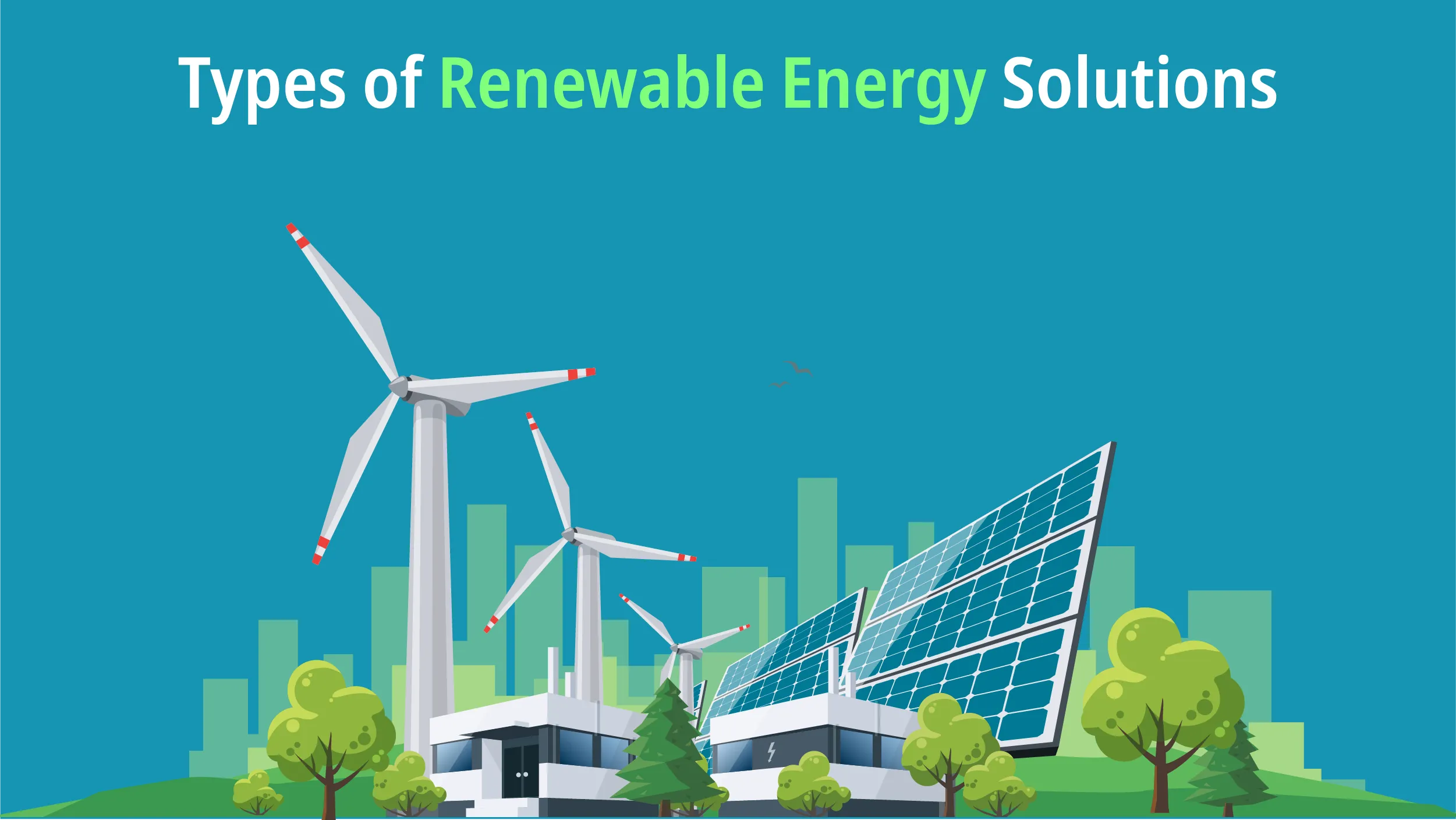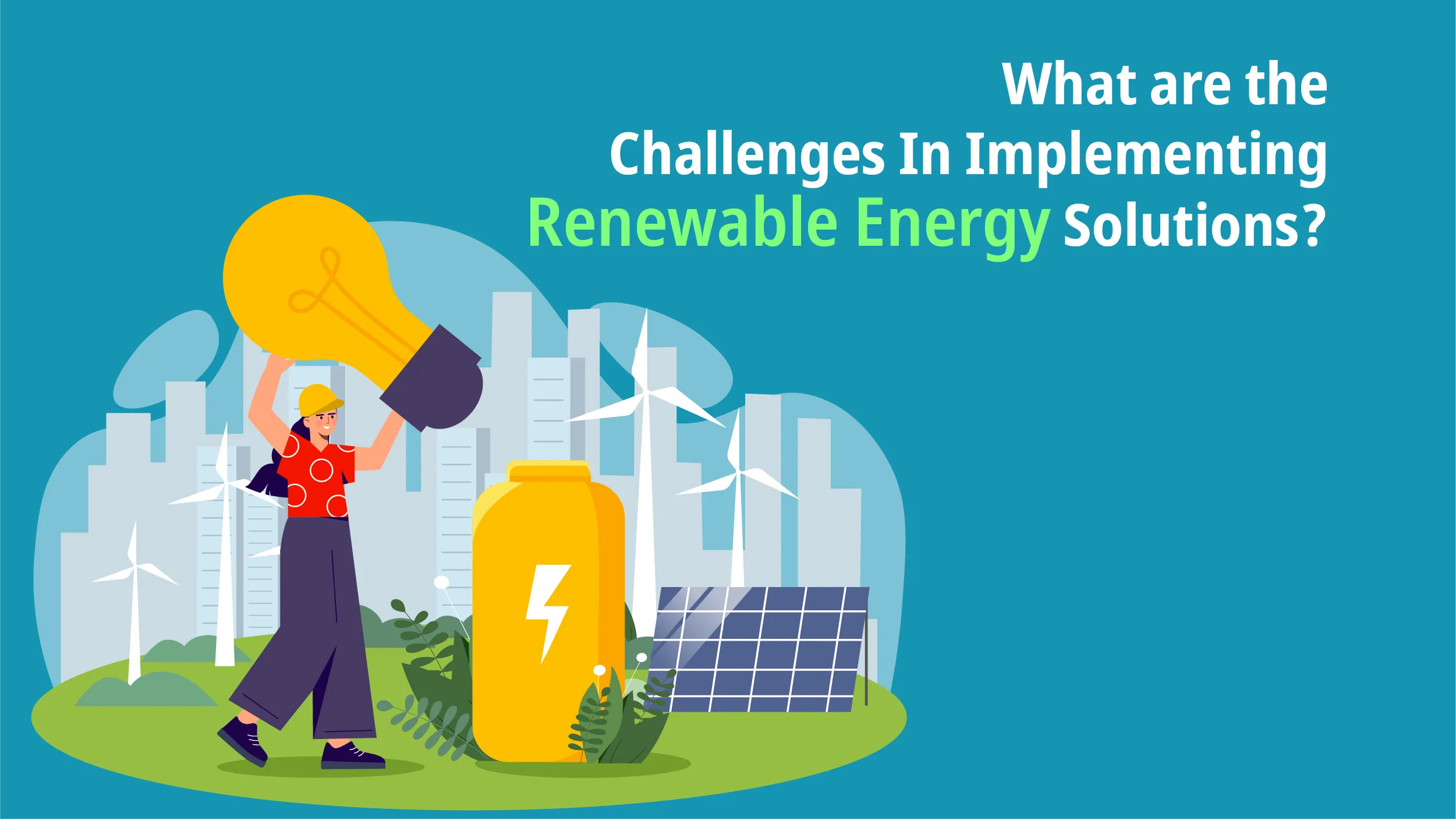Renewable energy solutions represent a pivotal pathway towards sustainable energy production and consumption in our modern world. As we confront the challenges of climate change and seek to reduce our dependence on finite fossil fuels, renewable sources such as solar, wind, hydroelectric, and biomass offer promising alternatives. According to studies, up to 35% of the world’s electricity will come from renewable sources by 2025. These technologies harness naturally replenishing resources to generate clean electricity and heat, contributing to both environmental preservation and energy security. By exploring the diverse array of renewable energy solutions available, we pave the way for a more resilient and sustainable energy future. Let’s learn more about it.
What are Renewable Energy Solutions?
Renewable energy solutions are those that leverage the natural replenishment of resources within a human timescale as a source of energy. By offering environmentally acceptable substitutes for fossil fuels, these strategies hope to lessen reliance on non-renewable resources and greenhouse gas emissions.
Types of Renewable Energy Solutions

1. Solar Energy
Solar energy is obtained from the sun’s radiation and can be converted into electricity or used for heating and cooling purposes. Solar panels, or photovoltaic cells, convert sunlight directly into electricity, while solar thermal systems use sunlight to produce heat. Advances in technology have made solar energy more efficient and cost-effective, with large-scale solar farms and residential rooftop installations becoming increasingly common. As of 2023, solar energy is a leading renewable source, contributing significantly to global electricity generation.
2. Wind Power
Wind turbines are used to harness wind’s kinetic energy and transform it into electrical power. Both onshore and offshore wind farms can use these turbines, while offshore wind farms benefit from stronger and more steady wind speeds. The wind power business is expanding quickly because of large investments in infrastructure and technology, which are lowering costs and raising capacity. A clean and dependable energy source, wind power generates a significant amount of the electricity generated in some areas.
3. Hydropower
Hydropower is generated by harnessing the energy of flowing or falling water. With a total energy generation of 1,392 GW in 2022, hydropower is the most widely used renewable energy source worldwide. Hydropower plants can vary in size from small systems for local communities to large-scale projects like the Three Gorges Dam in China, which is the world’s largest power station by installed capacity. Hydropower is highly efficient and provides a stable and continuous power supply.
4. Geothermal Energy
Geothermal energy is obtained from the heat stored within the Earth. It can be used for heating, cooling, and electricity generation. Geothermal power plants are typically located in regions with high tectonic activity, such as Iceland, the Philippines, and parts of the United States. Geothermal energy is a reliable and constant source of power, with the potential to provide base-load electricity generation. Additionally, geothermal heat pumps are used for residential and commercial heating and cooling systems.
5. Bioenergy
Bioenergy is derived from organic matter, such as plants and animal waste. It can be used for heating, electricity generation, and transportation fuels. Biomass can be converted into biofuels like ethanol and biodiesel, which can replace conventional fossil fuels in vehicles. Additionally, biogas produced from anaerobic digestion of organic waste can be used for heating and electricity generation. Bioenergy offers a way to utilize waste materials and reduce greenhouse gas emissions, contributing to a circular economy.
6. Ocean Energy
Ocean energy includes wave energy and tidal energy. Wave energy is generated by harnessing the power of ocean waves, while tidal energy is generated by capturing the energy from the ebb and flow of tides. These technologies are still in the early stages of development but have significant potential. Tidal power is more predictable than wind or solar energy, providing a reliable source of renewable energy.
7. Hydrogen Fuel Cells
Hydrogen fuel cells can be used as a renewable energy source when the hydrogen is produced using renewable sources of electricity, such as solar or wind power. Hydrogen fuel cells generate electricity by combining hydrogen and oxygen, with water as the only byproduct.
Also Read: What is Sustainable Manufacturing? Benefits, Best Practices
What are the Challenges In Implementing Renewable Energy Solutions?

- Intermittency and Variability: Renewable energy sources, such as solar and wind, fluctuate due to weather conditions and time of day. This intermittency challenges grid stability and necessitates efficient energy storage solutions to store excess energy during peak production for use during low-generation periods.
- Aging Infrastructure: Much of the existing energy infrastructure, including transmission and distribution lines, was built decades ago. This aging infrastructure may not be equipped to handle large amounts of renewable energy, making it difficult to integrate renewable sources into the grid.
- Cost Competitiveness: Although the costs of renewable energy technologies have been decreasing, achieving cost parity with traditional fossil fuel-based energy remains a challenge. The capital costs of building and installing renewable energy systems can be significant.
- Lack of Proper Energy Storage: Efficient, affordable, and reliable energy storage is crucial for renewable energy systems. Historically, variability in supply has been a major challenge for renewable energy generation. Developing effective energy storage solutions is essential to address this issue.
- Policy and Regulatory Barriers: The renewable energy industry faces challenges related to government policies, political pressures, and corporate influence. Supportive policies and regulations are necessary to strengthen the renewable energy market and facilitate wider adoption.
- Infrastructure and Market Limitations: Finding suitable sites for renewable energy projects can be challenging. Additionally, the existing market scenario and infrastructure may not be fully prepared to handle the integration of renewable energy sources.
- Technological Advancements: Continued technological advancements are needed to improve the efficiency and effectiveness of renewable energy solutions. Research and development efforts are essential to overcome technical challenges and enhance the performance of renewable energy technologies.
Final Thoughts
In summary, renewable energy options are viable for a more sustainable and environmentally friendly future. They offer a competitive substitute for conventional energy sources derived from fossil fuels, contributing to reducing greenhouse gas emissions, energy independence, and climate change mitigation.
Implementing renewable energy solutions is not difficult, though; these include infrastructural constraints, policy hurdles, cost competitiveness, and an intermittent nature. Infrastructure investment, enabling legislation, and technical breakthroughs are needed to overcome these obstacles. Notwithstanding these obstacles, there is no denying the advantages of renewable energy sources, and a more sustainable and environmentally friendly world for coming generations depends on their continuous advancement and broad use.




